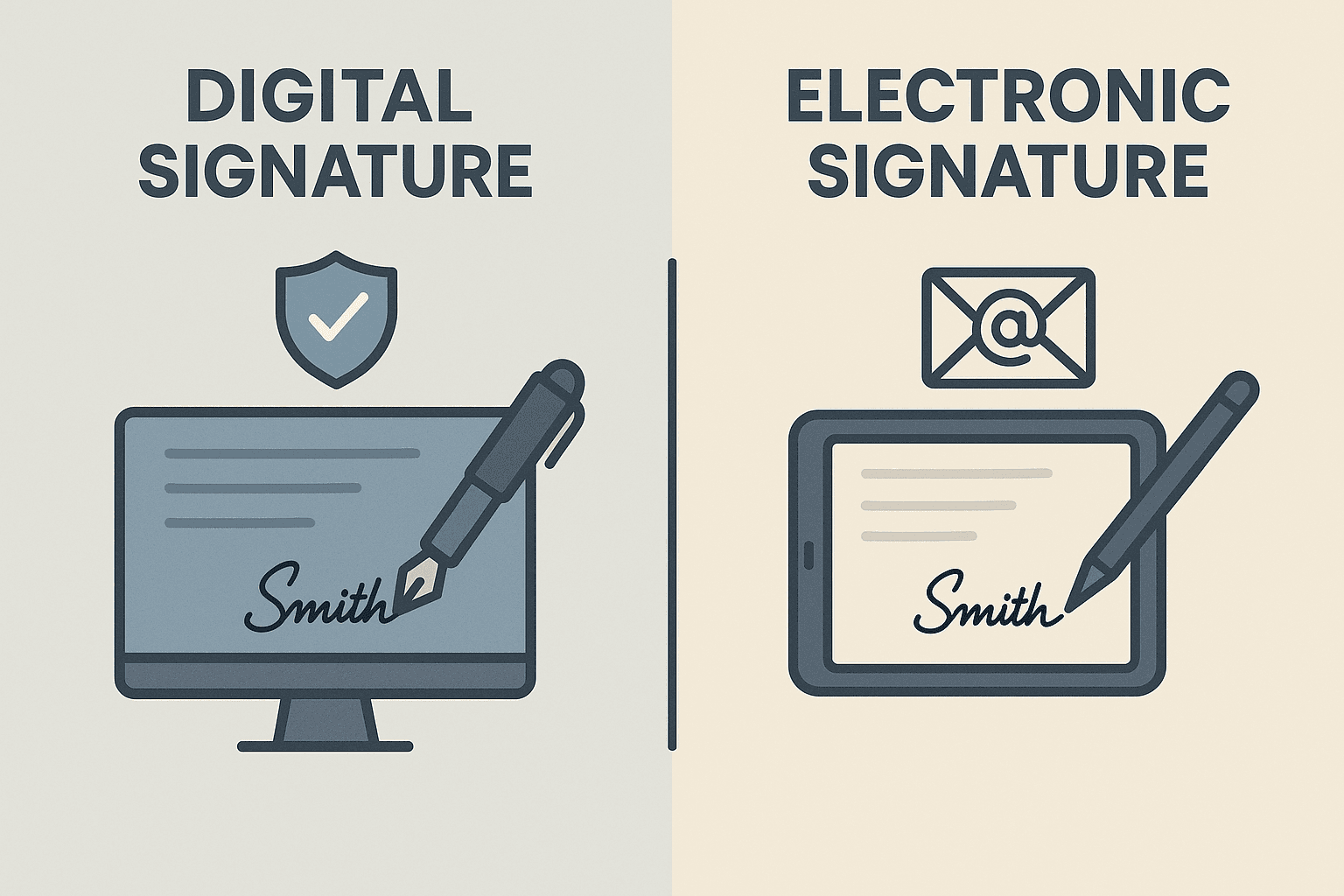WhatsApp or email with our sales team or get in touch with a business development professional in your region.
how to indicate digital signature





How to Indicate Digital Signature: A Comprehensive Guide
In today’s digital age, the process of signing documents has evolved drastically. Traditional handwritten signatures have been largely replaced by digital alternatives as businesses shift to online platforms for documentation and transactions. If you’re wondering how to indicate a digital signature correctly and legally—particularly in Hong Kong or Southeast Asia—this article will walk you through the process, legal terminologies, types of digital signatures, and best practices with localized compliance in mind.
Understanding What a Digital Signature Is
A digital signature is a form of an electronic signature that encrypts and verifies the authenticity of a document using cryptographic techniques. It’s important not to confuse a digital signature with a simple scanned signature—the former provides identity verification and document integrity, which makes it especially valuable in legal and regulatory contexts.
Under the Electronic Transactions Ordinance (Cap. 553) in Hong Kong, for example, digital signatures must be generated by an asymmetric cryptosystem and verified by a recognised certificate authority for legal effectiveness. Similar rules apply across Southeast Asia, with local adaptations found in countries like Singapore under the Electronic Transactions Act.
When and Why Do You Need to Indicate a Digital Signature?
There are several scenarios where properly indicating a digital signature is vital:
- Legal Contracts: Ensuring enforceability and non-repudiation.
- Government Filings: Compliance with e-Government regulations.
- Financial Transactions: Establishing trust and authentication.
- Business Communication: Quick turnaround for internal documentation.
In order to validate your digital signature, it must be visibly and verifiably placed on the document in compliance with local digital signature laws.

How to Properly Indicate a Digital Signature
Indicating a digital signature involves more than just placing an image or typed name in a document. It must carry cryptographic proof and show that:
- The document has not been altered since it was signed.
- The signer is verified by a Certificate Authority (CA).
- There’s a time-stamped record of the signing event.
Here are the standard steps to indicate a valid digital signature:
Step 1: Choose a Legally Recognized Digital Signature Platform
Use a certified platform that offers regionally compliant digital signature services. Ensure your provider supports certificates issued by a recognised Certificate Authority accepted in your jurisdiction. In Hong Kong, this could mean CAs listed under the Hongkong Post e-Cert scheme.
Step 2: Apply the Signature on the Document
Usually, this is done through a dedicated tool or API. The platform will ensure that the signature includes:
- Signer name
- Signing time and date
- Unique digital certificate identification
- Secure hash of the document
This data is either embedded directly into the PDF or document headers and can be verified anytime.
Step 3: Visually Represent the Signature (Optional But Recommended)
Most platforms allow users to visually indicate their digital signature on the document. It may look like a handwritten signature, rubber stamp, or simply text, but what matters is the underlying cryptographic verification.

Legal Terminology You Should Know
When dealing with digital signatures, it’s essential to understand relevant legal terms in local jurisdictions:
- Asymmetric Cryptosystem: A means of data encryption that uses public/private key pairs (required under Hong Kong’s Cap. 553).
- Digital Certificate: Electronic credentials issued by a Certificate Authority to verify identity.
- Trusted Service Provider (TSP): An organization authorized to provide signature creation and verification services.
In Singapore, for instance, TSPs must comply with guidelines set by the Infocomm Media Development Authority (IMDA) to ensure their digital signatures are admissible in court.
Types of Digital Signatures
Understanding the levels of digital signatures helps in choosing the correct one for your needs:
- Simple Electronic Signature (SES): Basic forms like typing names or scanned signatures. Minimal to no legal value in formal cases.
- Advanced Electronic Signature (AES): Linked uniquely to the signer and identifies them. Can detect any change in the signed data.
- Qualified Electronic Signature (QES): Meets the highest standards and legal requirements. Requires a secure device and a Certificate Authority.
For regulated industries like finance or legal services, AES or QES is highly recommended, especially under regional compliance laws.

Verifying a Digital Signature
Each legally compliant digital signature should be verifiable using designated tools or through the document viewer (e.g., Adobe Acrobat). When you open the file, a notification should appear indicating the signature is valid and unaltered.
You can also cross-check with:
- The certificate authority’s public records
- Timestamp records
- Audit trail features in your signature platform
These layers of verification are required to establish non-repudiation under laws such as Myanmar’s Electronic Transactions Law and Thailand’s Electronic Transactions Act.
Common Mistakes to Avoid
While indicating a digital signature, beware of these common pitfalls:
- Using non-compliant platforms not recognized by local authorities.
- Not securing the private signing key properly.
- Failing to inform counterparties of signature verification steps.
- Assuming a scanned image equals a digital signature—it does not.
Another major concern is relying on international platforms not compliant with local data protection laws, such as the Personal Data Protection Act (PDPA) in several Southeast Asian countries.

Choosing a Compliant Alternative for Hong Kong and Southeast Asia
Given the legal specificity in different Southeast Asian jurisdictions and the need for compliance with local electronic signature regulations, users in Hong Kong, Singapore, Thailand, and Malaysia should consider using regionally compliant digital signing platforms.
While global providers like DocuSign are widely recognized, they may not always align with local data residency or legal compliance needs. A more suitable alternative would be eSignGlobal—a platform that offers:
- Regional compliance with Hong Kong ETO and Southeast Asian electronic transaction acts
- Certificate issuance by recognized authorities
- User-friendly UI with advanced cryptographic protection
- Full audit trails for legal validation
eSignGlobal supports localized compliance while providing robust security, making it a practical choice for businesses and professionals across Asia.

Final Thoughts
Understanding how to indicate a digital signature goes beyond simply clicking a “Sign” button. Not only must the signature be correctly placed and visually represented, but it must also comply with the legal terminology and technical requirements of your jurisdiction.
As electronic signatures become the standard for lawful digital transactions, knowing how to implement, verify, and choose a compliant provider is crucial. By following the steps outlined in this guide and selecting tools certified within your region, you’re not just digitizing your workflow—you’re digitally future-proofing it.

Shunfang
Head of Product Management at eSignGlobal, a seasoned leader with extensive international experience in the e-signature industry.
Follow me on LinkedIn
Get legally-binding eSignatures now!
30 days free fully feature trial
Business Email
Get Started
 Only business email allowed
Only business email allowed
Latest Articles
Does using electronic signatures save revenue stamp tax (Shunyuzei) in Japan?
Is it legal to use cloud-based signatures instead of Hanko in Japan?
How to collect legally binding signatures from employees in China?
What are the requirements for an electronic invoice (e-Fapiao) signature?
How to automate sales contracts for a manufacturing business in China?
Can I use WeChat to legally sign a loan agreement?
How to verify if a Chinese electronic contract has been tampered with?
What is the best way to sign NDAs remotely with Chinese partners?


